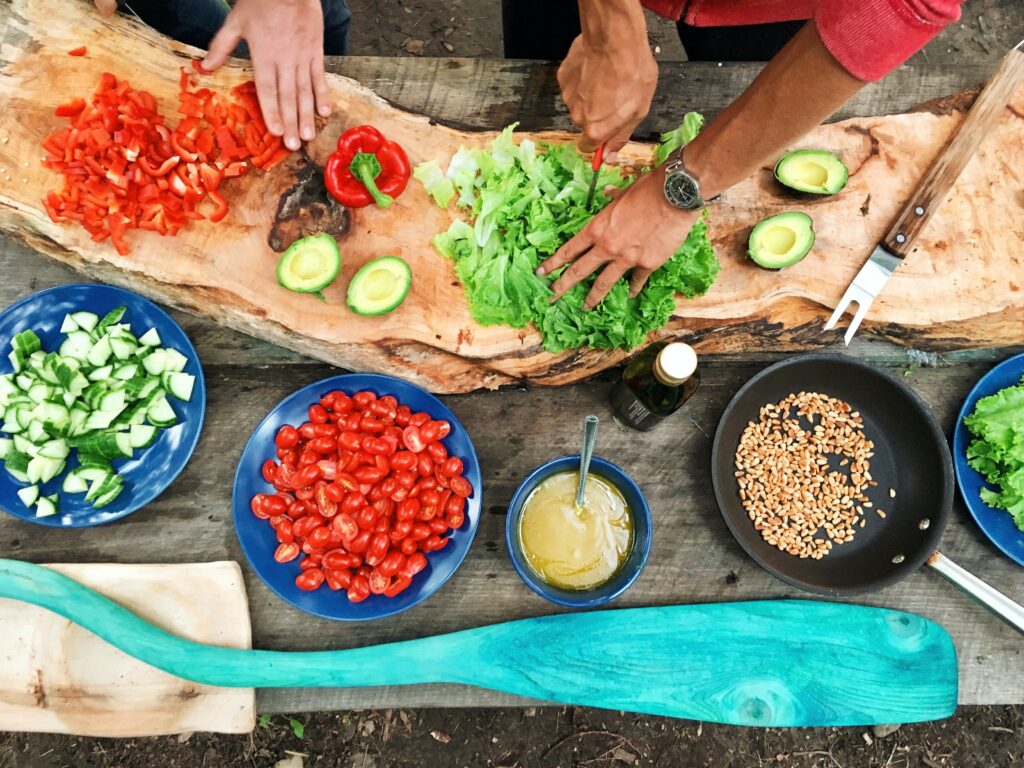Do you know about food safety when cooking!!!
Are you a foodie who loves to cook? Or maybe someone who wants to start cooking more often but is worried about foodborne illnesses? Either way, it’s important to know the basics of food safety when preparing meals at home.
From storing ingredients properly to handling and cooking meats safely, following these tips can keep you and your loved ones safe from harmful bacteria. So grab your apron, tie up your hair, and let’s explore how you can ensure that every meal you cook is both delicious and safe!
People at risk from food poisoning
There are several groups of people who are more at risk from food poisoning than others. These groups include:
– infants and young children
– pregnant women
– the elderly
– people with compromised immune systems
Each of these groups is more susceptible to food poisoning for different reasons. Infants and young children, for example, have immature digestive systems that are not yet able to effectively process and eliminate harmful bacteria. Pregnant women have a similarly weakened digestive system, and their immune systems are also suppressed to some degree in order to prevent the rejection of the fetus.
The elderly often have weaker immune systems due to age-related changes, and they may also take medications that further impair their ability to fight off infection. Finally, people with compromised immune systems due to conditions like HIV/AIDS or cancer are also at increased risk for developing food poisoning.
Safety when cooking high-risk foods
When cooking high-risk foods, it is important to take extra care to ensure that they are cooked safely. This means avoiding cross-contamination, using appropriate cooking methods, and maintaining food safety standards.
Cross-contamination is the biggest concern when cooking high-risk foods. This occurs when bacteria from one food item is transferred to another. It can happen during food preparation, cooking, or storage. To avoid cross-contamination, always cook high-risk foods separately from other foods. Use separate cutting boards, utensils, and plates for raw and cooked foods. Thoroughly clean all surfaces and utensils after each use.
It is also important to use the proper cooking methods when preparing high-risk foods. These foods should be cooked thoroughly to kill any harmful bacteria that may be present. Use a food thermometer to ensure that meat, poultry, and seafood are cooked to the correct internal temperature. Eggs should also be cooked until the yolk and white are firm. Avoid undercooked or raw eggs as they can contain salmonella bacteria.
When handling high-risk foods, it is important to follow food safety standards at all times. Wash your hands thoroughly with soap and water before and after handling these foods. Keep them refrigerated if possible or cook them immediately if not. Do not leave cooked food out at room temperature for more than two hours as this increases the risk of bacterial growth.

High-risk foods and the temperature danger zone
High-risk foods are those that are most likely to cause food poisoning. These include meat, poultry, fish, shellfish, eggs, and dairy products. The temperature danger zone is the range of temperatures between 40°F and 140°F in which bacteria can grow rapidly.
Cooking high-risk foods properly is essential to keeping them safe to eat. Use a food thermometer to make sure that cooked meats, poultry, and fish reach a safe internal temperature. The following chart lists the minimum safe internal temperatures for various types of food:
Type of Food Minimum Safe Internal Temperature (°F) Ground meat 160 Poultry 165 Eggs 160 Fish 145 Shellfish 145 Dairy products pasteurized
It is important to note that these temperatures are the minimum necessary to kill harmful bacteria. It is still possible for food to be undercooked if it does not reach these temperatures. For this reason, it is always best to err on the side of caution and cook food to a higher temperature if you are unsure whether it has reached a safe internal temperature.
Cook all food to a temperature of 75 °C
When cooking, it is important to ensure that all food is cooked to a temperature of 75 °C. This will help to kill any bacteria which may be present in the food, and thus prevent food poisoning.
There are a few ways in which you can check the temperature of your food:
– Use a digital thermometer: insert the thermometer into the thickest part of the food, and ensure that the tip does not touch bone, as this will give an inaccurate reading. Wait for a few minutes before taking the temperature.
– Use a stovetop thermometer: place the thermometer into the pan or pot containing the food, ensuring that it is not touching the sides or bottom. cook as usual, checking the temperature every few minutes.
– Check visually: when cooking meat, fish, or poultry, cook until the juices run clear when pierced with a knife. For thicker cuts of meat, use a digital thermometer to check that the internal temperature has reached 75 °C.
Food safety with raw eggs
There are a few things to keep in mind when handling raw eggs to ensure food safety. First, always purchase eggs from a reputable source and check the expiration date before using them. If the eggs are cracked or damaged in any way, do not use them.
Before cracking the eggs, wash your hands thoroughly with soap and water. It is also important to clean all surfaces and utensils that will come into contact with the eggs. Use hot, soapy water, and make sure to rinse well.
When you are ready to cook, crack the eggs into a separate bowl before adding them to the recipe. This way, if there are any bacteria on the eggshells, they will not contaminate the rest of the food.
Cook eggs until they are firm and no longer runny. Bacteria can survive in raw or undercooked eggs. scrambled Eggs, omelets, and quiches should be cooked until both the whites and yolks are firm. Fry, poach or boil eggs until the whites and yolks begin to solidify. Use a thermometer to check that egg dishes have reached an internal temperature of 160°F throughout before serving.
Food safety and microwave cooking
When it comes to food safety, microwave cooking is a great option. Unlike other methods of cooking, microwaves cook food evenly and quickly, which helps to prevent the growth of bacteria. Additionally, microwaves can help to kill bacteria that may already be present on food surfaces. However, there are a few things to keep in mind when using a microwave to cook food.
First, make sure that the microwave is clean. Any dirt or debris on the interior surface of the microwave can transfer to food and contaminate it. Wipe down the inside of the microwave with a clean, damp cloth before each use.
Second, only use microwavable containers for cooking. Do not use plastic wrap or aluminum foil in the microwave, as these can cause sparks or fires. Additionally, do not use any type of container that has been damaged or cracked.
Third, follow the instructions on any packaged food you are microwaving. Some foods should not be cooked in the microwave because they can explode or catch fire. Be sure to read all labels carefully before putting anything in the microwave.
Microwave cooking is a safe and convenient way to prepare food. By following these simple tips, you can help ensure that your food is properly cooked and free of contaminants.

Cooling and storing food
Cooling and storing food properly is key to preventing food poisoning. Here are some tips to help keep your food safe:
-Refrigerate perishable foods within 2 hours of cooking or purchasing.
-Freeze meat, poultry, fish, and cooked leftovers within 2 days.
-Thaw frozen food in the refrigerator or microwave, not on the counter.
-Never leave cooked food out of the fridge for more than 2 hours.
-If you’re bringing cooked food to a potluck or buffet, keep it hot (above 140°F) or cold (below 40°F).
-When in doubt, throw it out! If you’re not sure how long something has been stored, it’s better to be safe than sorry.
Reheat food to steaming hot
When reheating food, it is important to bring it to a steaming hot temperature. This means that the food should be hot enough to produce vapor when you blow on it. Reheating food to this temperature will kill any bacteria that may be present and make the food safe to eat.
Final Notes
When cooking, it is important to take food safety into consideration in order to avoid making yourself or others sick. There are a few key things to keep in mind when cooking in order to ensure the food you’re preparing is safe to eat.
First, be sure to wash your hands thoroughly with soap and water before handling any food. This will help to prevent the spread of bacteria from your hands to the food.
Next, make sure all of your utensils and surfaces are clean before you begin cooking. Bacteria can easily spread from dirty surfaces to food, so it’s important to start with a clean slate.
Finally, cook food thoroughly and evenly. Undercooked food can harbor harmful bacteria that can make you sick, so be sure to cook everything thoroughly. Use a meat thermometer to check that meat has reached a safe internal temperature before eating.
By following these simple tips, you can help to ensure that the food you’re preparing is safe for everyone to enjoy.

